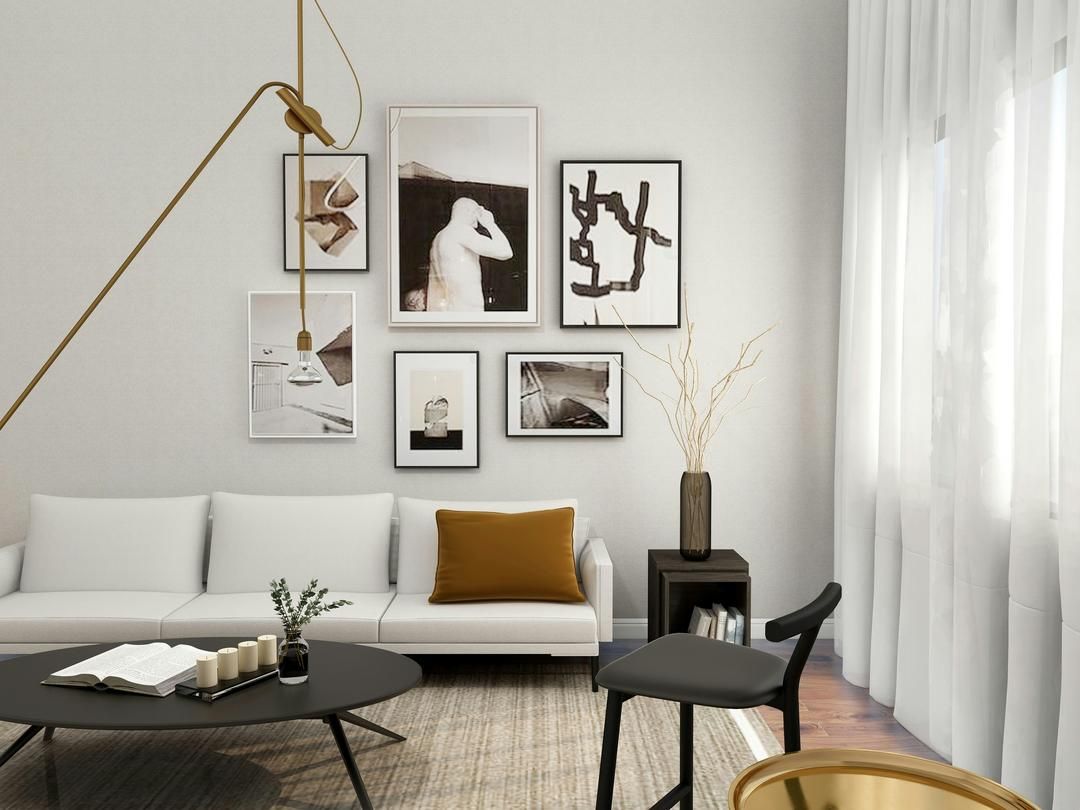Once the moving boxes are unpacked, a lot of people feel pressure to finish decorating right away. It’s easy to think life can’t really start until every lamp, pillow, and side table is in place. That pressure is often fueled by fast furniture delivery, quick-changing trends, and the desire to feel settled. But more homeowners across Western North Carolina and Upstate South Carolina are realizing that slowing down can lead to calmer, more personal spaces. When you let a room evolve naturally, your choices tend to fit your routines, whether that’s early mornings on the porch in Hendersonville or cozy winter evenings in Greenville, rather than rushing to make everything look “done.”
What is slow decorating?
Slow decorating is about making thoughtful choices instead of fast ones. Rather than filling every corner the first week, you live in the space and see how it behaves. You notice where the morning light hits in your Asheville bungalow or which corner of your Spartanburg living room naturally becomes a reading spot. You see which areas turn into drop zones or gathering spaces. That time spent simply living in your home often reveals needs you wouldn’t catch on a single shopping trip. Because this approach is about rhythm and habit more than square footage, it works just as well in a downtown Greenville condo as it does in a farmhouse outside Brevard.
Why gradual decisions often lead to better long-term results
Fast decorating is the norm on social media and home makeover shows. A room is shown fully finished in a few days, every surface styled at once. It’s satisfying to look at, but it can lead to choices that don’t hold up. Maybe the sofa’s too big for the room, storage gets overlooked, or decor is bought just to fill empty shelves. People who take a slower approach tend to avoid these frustrations. They take time to measure, compare, and sit with options. They’re less likely to make impulse buys and more likely to feel confident about big decisions like rug size or paint color. Over time, the room starts to reflect how they actually live—whether that means space for muddy hiking boots near the door or a quiet corner for remote work—rather than how they imagined things would go on move-in day.
What seasonal living reveals about your space
Homes in this region change character with the seasons. A living room that feels bright and airy in July might seem chilly once January rolls in. A sunny windowsill in spring might become your favorite coffee spot come fall. Slow decorating gives you time to notice those shifts before committing to permanent layouts or purchases. You might realize you need heavier curtains for a mountain winter, a lighter rug for humid summers, or a different seating arrangement once the days shorten. As the months pass, these observations help you decide which materials, colors, and setups make sense in real life—not just in a mood board.
How slow decorating helps clarify personal style
Many people move into a new place and suddenly feel unsure about what they actually like. Maybe the old furniture doesn’t fit, the wall color clashes with the flooring, or the scale feels off. Slow decorating gives you permission to figure out your taste as you go. You can experiment without locking into a theme. A borrowed coffee table might hold you over while you search for something that fits both your space and budget. Simple shelving can help you test how much storage you need before investing in built-ins. As you live with these temporary solutions, patterns start to emerge. You notice which textures, shapes, and colors you keep coming back to. Over time, your home starts to feel cohesive in a way that comes from experience, not from copying a single inspiration photo.
Using what you already have to evolve your home
Slow decorating doesn’t mean constant shopping. Often, it starts by rearranging what you already own. Moving a sofa closer to a window can change how inviting a room feels. Swapping a chair from the bedroom into the living room might make better use of both spaces. Shifting a bookshelf to a different wall can rebalance the whole room. Rotating artwork, pillows, or blankets from one space to another keeps things fresh without spending more. These small changes help you see which pieces actually support your daily routines and which ones don’t. Over time, your home becomes more tailored to how you live—whether that’s hosting friends after a Clemson game or relaxing after a day on the Blue Ridge Parkway.
The influence of sustainable habits on slower design
Sustainability has also encouraged more people to take their time decorating. Furnishing a home with secondhand or vintage pieces reduces demand for new production and keeps existing items in use longer. According to the United States Environmental Protection Agency, furniture contributes to a meaningful amount of landfill waste each year, and many of those pieces still have usable life left. Choosing previously owned, durable items fits naturally with the slow decorating mindset. A solid wood dresser from a local resale shop in Asheville can often be repaired, refinished, or repurposed over time. A vintage table from a Greenville antique market may weather trends more gracefully than something bought quickly to match a passing style. Because you don’t need to buy everything at once, this approach works for a range of budgets and timelines.
Why observation is the first step
For most people, slow decorating starts with observation. Instead of rushing to fill blank walls and empty corners, you spend time moving through your home and noticing how it functions. You see where clutter tends to gather and which areas you avoid. You identify the rooms that carry most of the daily load and the ones that sit unused. When you start making changes, you focus on essentials. Maybe your bedroom needs better window coverings before new art. Maybe your living room would benefit more from comfortable seating than from a gallery wall. That early period of observation makes it easier to prioritize what truly improves daily life.
How lighting shapes the feel of a room
Lighting is one of those details where patience pays off. Natural and artificial light change the mood of a room throughout the day. Colors can look warm in morning light and cool by evening. A corner that feels too dim in winter might be perfectly bright in spring. By watching how light moves through your home, you can make smarter choices about lamp placement, bulb types, and window treatments. Temporary lamps or clip-on fixtures can help you test where light is most useful before investing in permanent solutions. Over time, this attention to lighting creates rooms that feel comfortable, practical, and easy to live in—whether you’re in a mountain cabin or a downtown loft.
How a gradual approach supports emotional comfort at home
Slow decorating isn’t just about function. It also shapes how a home feels emotionally. When a space grows alongside your life, it ends up filled with objects and arrangements that carry meaning. A side table might hold books you’ve actually read. A shelf might display everyday items that remind you of specific seasons or milestones. Artwork and photos find their place gradually instead of all at once. The result is a home that feels lived in and familiar. The story of the space unfolds through choices made over time, not through a single burst of activity after move-in day.
Why slow decorating fits the way people live today
Slow decorating appeals to many households because it accepts that life keeps changing. Jobs shift, schedules adjust, families grow or reshape. A room that serves as a home office one year might become a guest room or playroom the next. When you don’t rush to define every space, it’s easier to adapt as your needs evolve. This flexible mindset pairs well with the growing interest in sustainable living, secondhand shopping, and more individual interiors. Instead of trying to finish your home on a deadline, you give yourself room to make thoughtful updates. Over time, that slower pace often leads to spaces that feel more grounded, more personal, and easier to enjoy day to day.
If you’re thinking about listing your home and want to know what buyers in Western North Carolina or Upstate South Carolina respond to, reach out. We’re happy to share local insights before you make any big decisions about updates or decor.
%20(3).png)
%20(3)-1.png)



